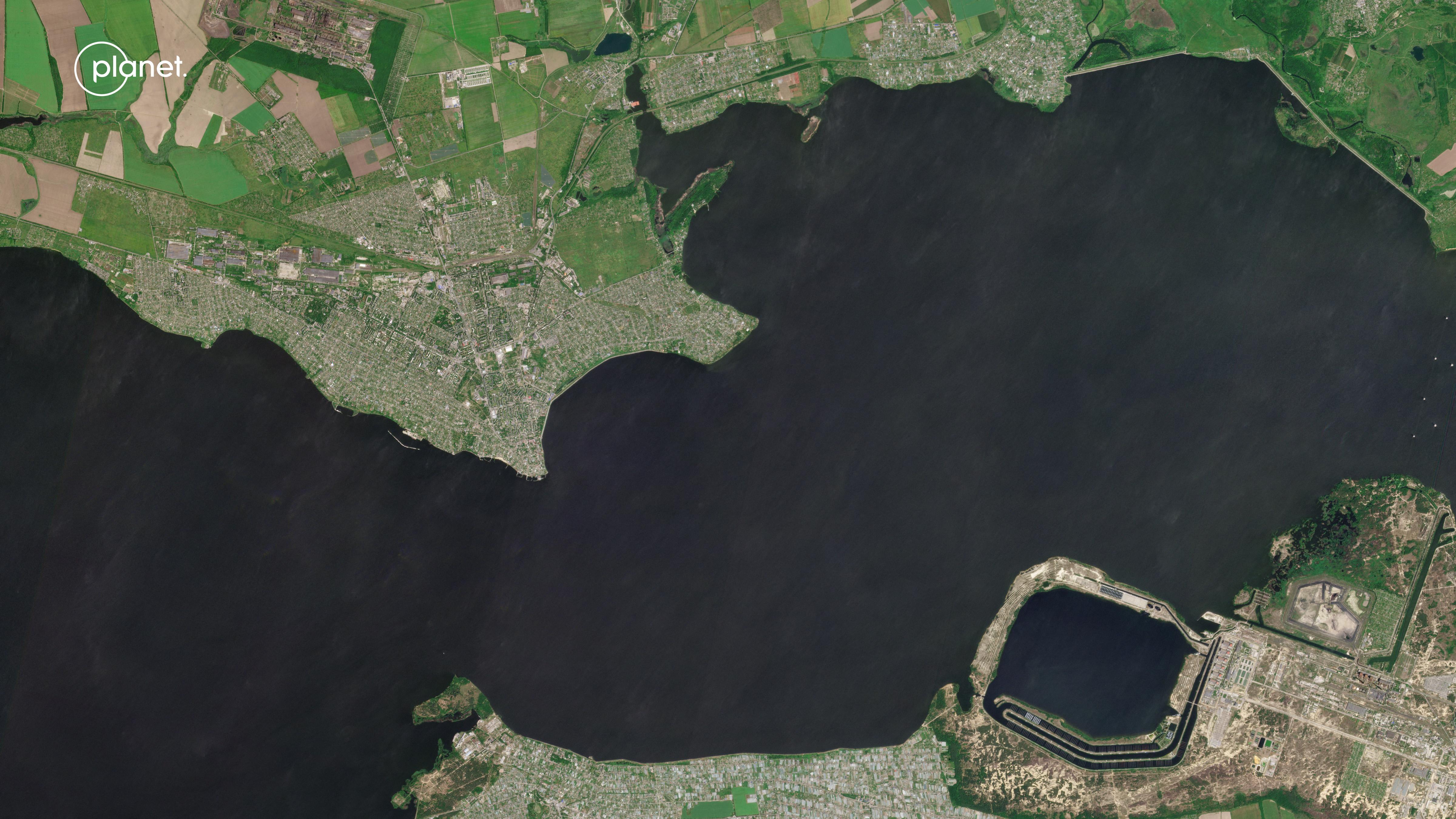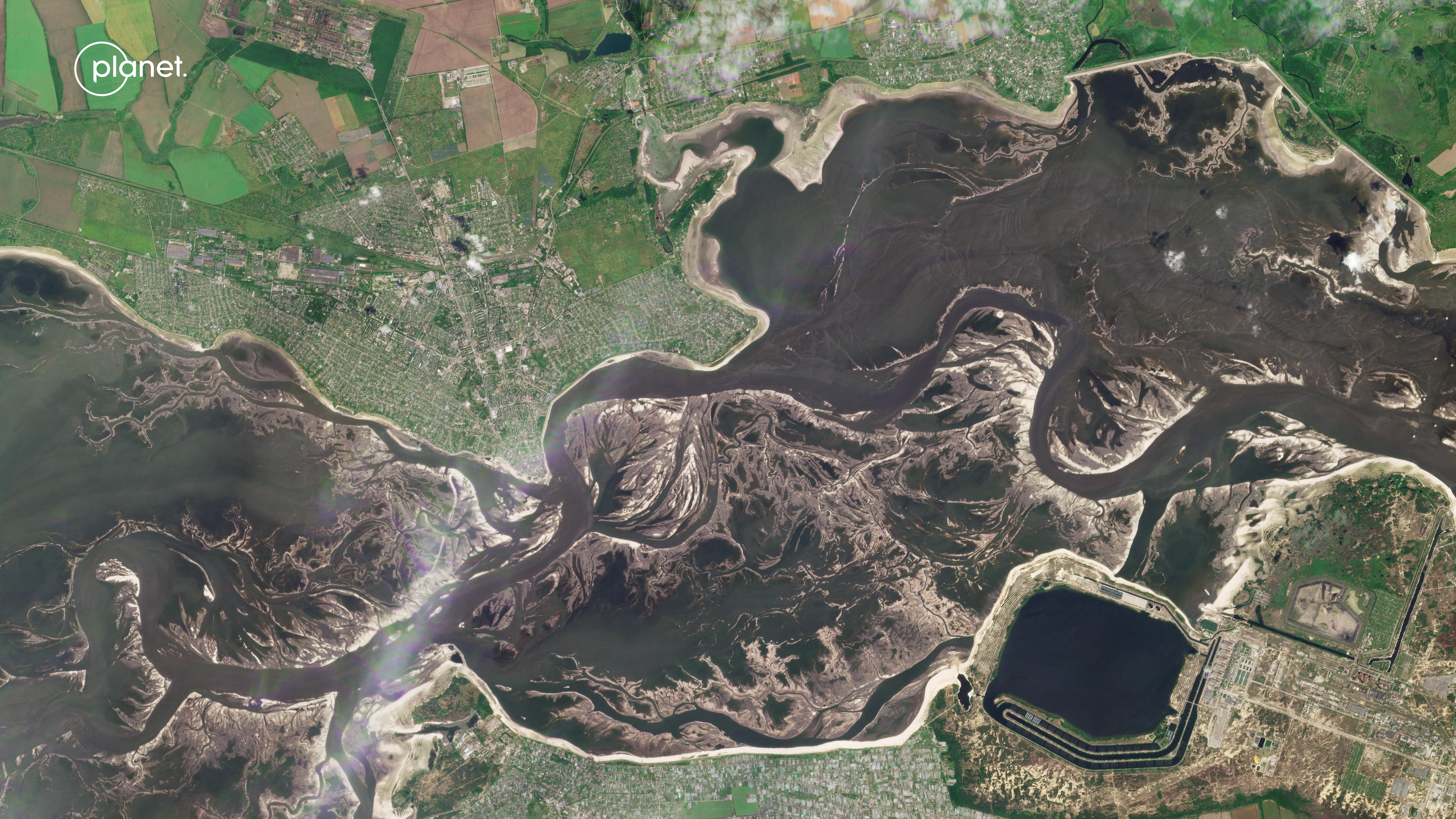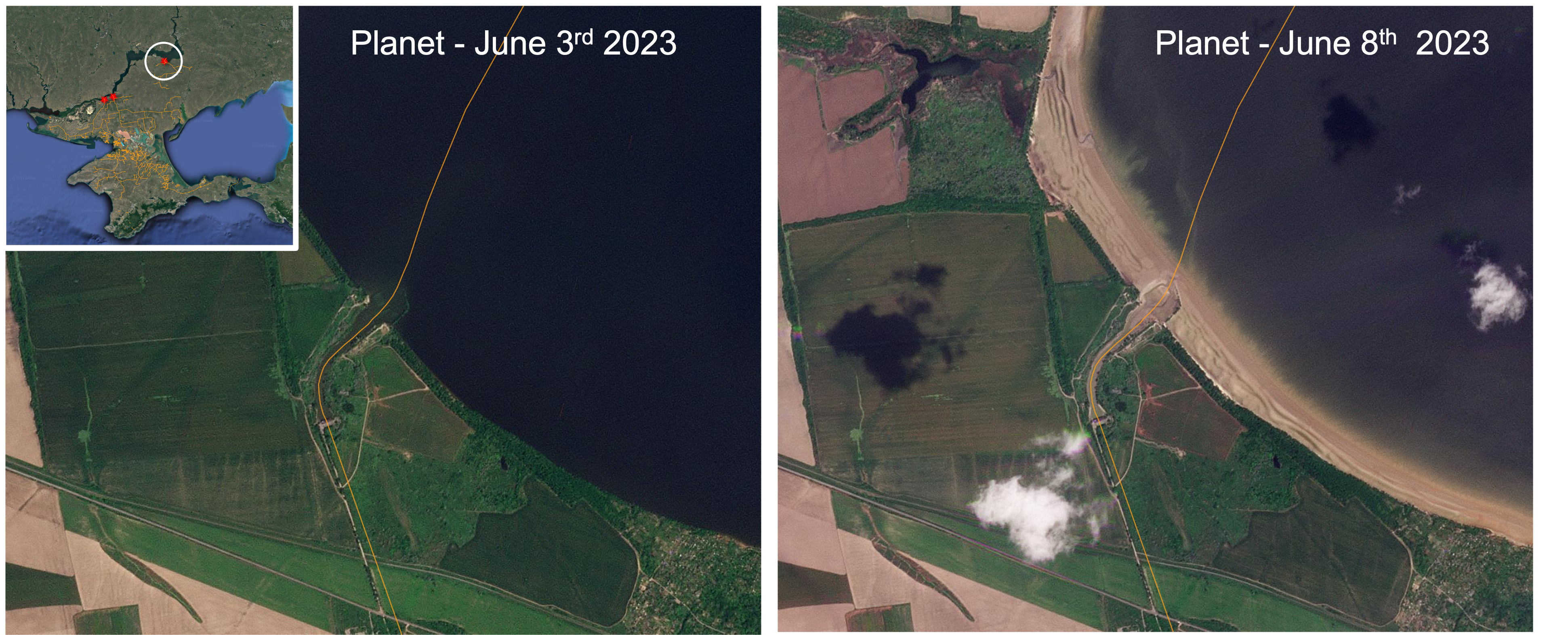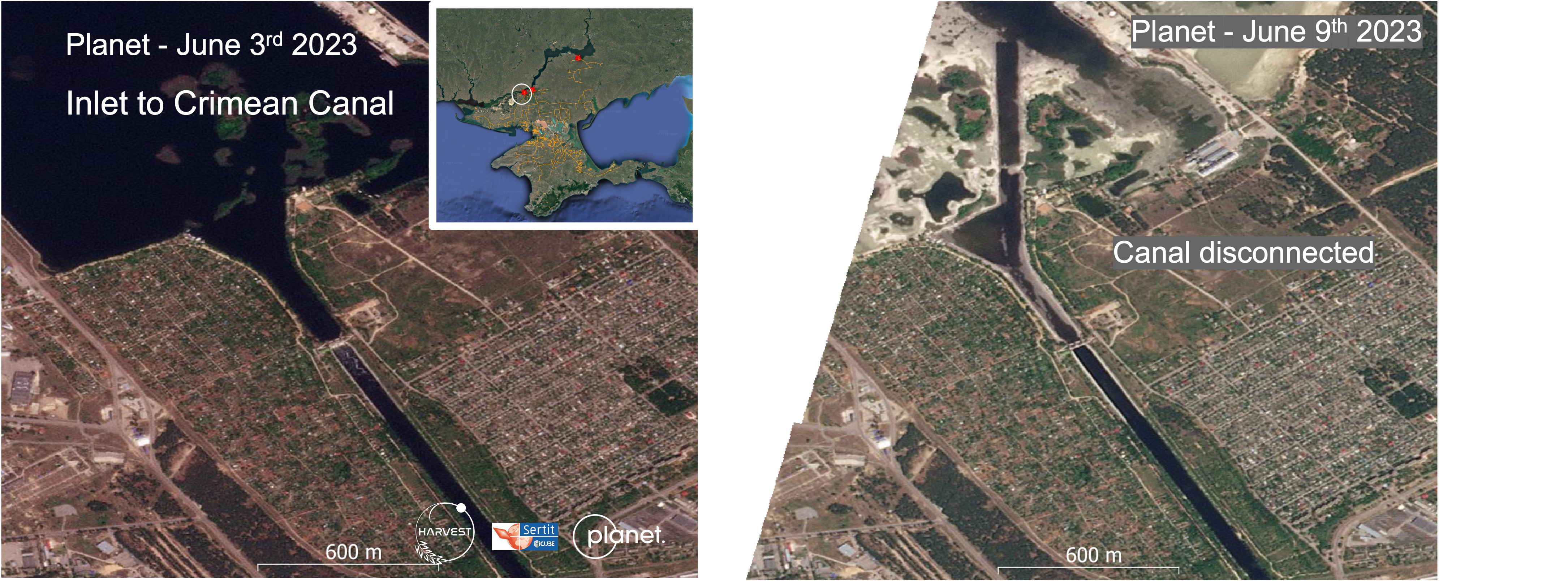Gallery: Satellite Images Reveal Damage from Ukrainian Dam Collapse
June 16, 2023Ukraine’s Kakhovka Hydroelectric Power Plant Dam, located in Russian-occupied Nova Kakhovka in Kherson Oblast, collapsed June 6 following an explosion, flooding the surrounding agricultural land, villages and towns as well as displacing thousands of residents.
The cause of the explosion is still unclear, as both Russia and Ukraine claim it was caused by the other. The total flooded area is an estimated 410-420 km2, 3.5-5 km2 of which is cropland, according to NASA Harvest, a global food security and agriculture consortium led by NASA and the University of Maryland.
The reservoir that the dam previously held back had supplied water to an estimated 12,000 km of irrigation canals. Combined with the flooded cropland, the now partially disconnected canal system could have concerning implications for food and water security. Additionally, according to a statement from Ukrainian President Volodymyr Zelenskyy's office, the Dnipro River on which the dam sits on has been contaminated with 150 tons of machine oil, a significant environmental concern.









